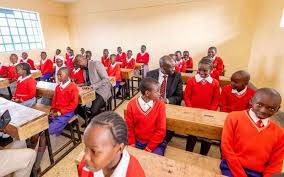
As the new academic year dawns in 2025, the hallways and schoolyards of Kenya’s public education system echo with a familiar refrain of frustration and uncertainty. Two years after the government’s promises to address the chronic underfunding of the sector, administrators, teachers, and students find themselves once again grappling with the debilitating consequences of delayed disbursements from the Ministry of Education and the national Treasury.
“It’s déjà vu all over again,” laments Fatima, the principal of a large public secondary school in Nairobi. “We had hoped that the new administration would make good on its pledge to prioritize education, but here we are, struggling to keep the lights on and provide our students with the resources they need to succeed.”
The ripple effects of the funding delays have reverberated across the public school landscape, impacting every facet of the learning experience. From the postponement of essential infrastructure repairs and the lack of teaching materials to the inability to offer adequate meals and extracurricular activities, the constraints placed on these institutions have thrust them into a perpetual state of crisis.
“We were forced to cancel our annual science fair and postpone our sports day – again – because we simply couldn’t afford the necessary supplies and equipment,” says Asha, a teacher at a primary school in Mombasa. “The students are devastated, and it’s heartbreaking to see their enthusiasm and sense of belonging being chipped away year after year.”
The financial strain has also taken a significant toll on the morale and wellbeing of the teachers, who are once again forced to dip into their own pockets to fill the gaps left by the delayed disbursement of funds.
“I’ve had colleagues who have resorted to borrowing money just to keep their classrooms stocked with basic stationery,” explains David, a secondary school teacher in Nakuru. “It’s a level of personal sacrifice that no educator should have to endure, and it’s fueling a growing sense of frustration and burnout within the profession.”
The origins of this ongoing crisis can be traced back to the broader economic challenges facing the Kenyan government, as shifting priorities and budgetary constraints continue to squeeze the national education budget.

“The reality is that the education sector is competing for limited resources with other critical areas like healthcare, infrastructure, and social services,” says Dr. Wambui, an education policy analyst at a local think tank. “And when the purse strings are tightened, it’s often the public schools that bear the brunt of the cuts.”
However, for many Kenyans, the persistent underfunding of the education system represents a betrayal of the country’s commitment to providing quality learning opportunities for all its citizens – a cornerstone of Kenya’s national development agenda.
“Education is the great equalizer, the foundation upon which we can build a more prosperous and equitable society,” argues Fatima, the school principal. “By neglecting our public schools, we are effectively denying countless children the chance to break the cycle of poverty and reach their full potential.”
In response to the growing crisis, the Kenyan government has once again pledged to address the funding delays and ensure that public schools receive the resources they need to thrive. This includes promises of increased budgetary allocations, streamlined disbursement processes, and a renewed focus on the education sector as a whole.
“We recognize the immense challenges facing our public schools, and we are committed to working with all stakeholders to find sustainable solutions,” says a spokesperson from the Ministry of Education. “This is a priority issue for our government, and we will spare no effort in ensuring that our children receive the high-quality education they deserve.”

Yet, for many educators and community members, the government’s response has yet to translate into tangible improvements on the ground, leaving them with a lingering sense of skepticism and a growing sense of urgency.
“The clock is ticking, and our students can’t afford to wait any longer,” says Asha, the primary school teacher. “We need immediate, decisive action to address this crisis, not just more promises. The future of our nation is at stake, and we simply can’t afford to fail our young people.”
As the 2025 academic year unfolds, the struggle of Kenyan public schools to maintain their operations in the face of delayed funding has become a stark testament to the fragility of the education system and the pressing need for a comprehensive, well-resourced approach to supporting the country’s students and teachers.
“This is a wake-up call for all of us,” says Dr. Wambui, the education policy analyst. “We can no longer afford to treat the education sector as an afterthought. It’s time to elevate it to the forefront of our national priorities, to invest in its future with the same fervor and commitment that we bring to other critical areas of development. The stakes have never been higher, and the time to act is now.”




